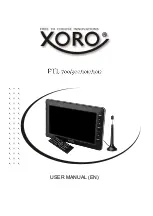
SS-OCT System Base Unit
Chapter 2: Setup
Page 12
MTN013142-D02
9)
Signal, Trigger and USB connections at the Base Unit (see Figure 12):
Attach the SMA cable labeled “k-CLOCK Signal” to the respective SMA port.
Attach the SMA cable labeled “OCT Signal” to the respective SMA port.
Attach the SMA cable labeled “DAQ Trigger” to the respective SMA port. NOTE: The CWLTrigger
output can be used as an alternative DAQ Trigger, but this will require modifications of parameters
for the data acquisition. By default the output is capped.
Attach the SMA cable labeled “SYNC TRIGGER” to the respective SMA port. Make sure all the
SMA connections are secured tightly.
Attach the VHDCI cable to the respective port which is labeled “Control”. Make sure both fastening
screws which are attached to the connector are bolted tightly.
Connect the USB cable to the USB port and make sure the connection is tight.
Figure 12
Installation of the Electrical Connections at the Base Unit
10)
Connections at the PC (see Figure 13):
Identify both the ATS9351 or ATS9360 DAQ card, and the NI PCIe-6351 DAQ card at the back
of the PC (see Figure 13).
Connect the VHDCI cable to the NI PCIe-6351 DAQ card. Make sure both fastening screws which
are attached to the connector are bolted tightly.
Attach the SMA end of the cable labeled “ECLK” at the ATS9351 or ATS9360 card marked as
“ECLK”.
Attach the SMA end of the cable labeled “CH B” to the respective SMA port of the ATS9351 or
ATS9360 card marked as “CH B”.
Attach the SMA end of the cable labeled “TRIG IN” to the second SMA port from the left marked
as “TRIG IN”.
Attach the SMA end of the cable labeled “AUX I/O” to the first SMA port from the left marked as
“AUX I/O”. Make sure all the SMA connections are secured tightly.
The SMA port marked as “CH A” is not used!
















































